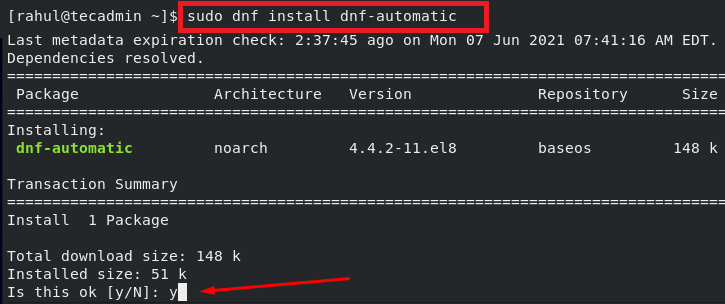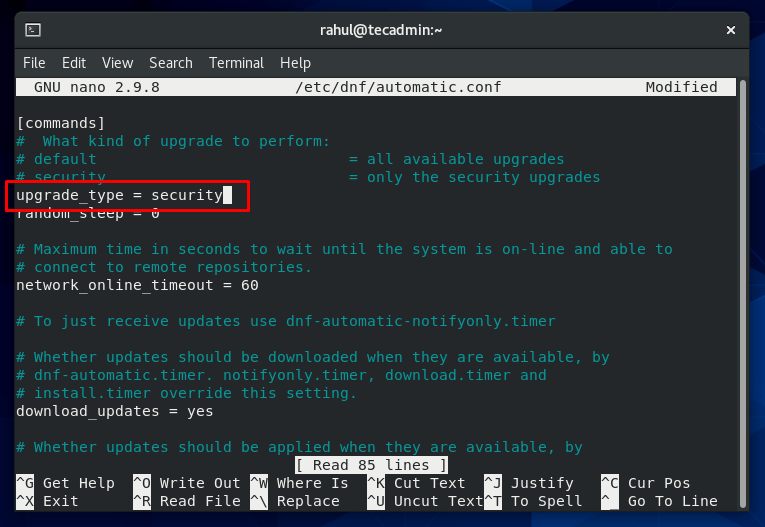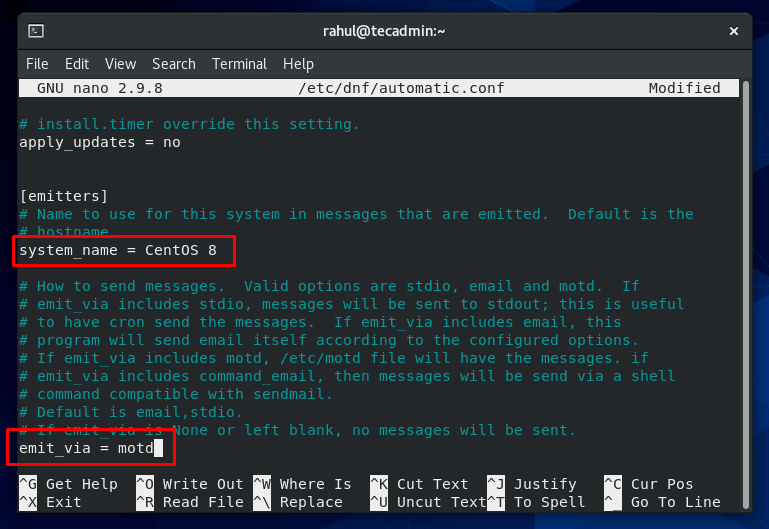How To Update Security Patches In Centos
Updates are essential in any operating organization environment because information technology allows application, processes and the operating arrangement itself to be in a consequent working condition. That's too the reason that nearly of the updates include security compatibility and enhancements.
Why are security updates and then of import to install?
Your computer's vulnerabilities are fixed with the help of security updates. These updates protect your system from local and remote threats. When developers found whatsoever vulnerability, they effort to fix it quickly and so distribute the "quick fix" as a security update for y'all to install it as soon as possible. As those vulnerabilities go public, permitting the potential attackers to exploit them. This argument declares that an outdated system is vulnerable, simply information technology is also recognized every bit a vulnerable arrangement for attackers.
Security updates also play a significant role in the Linux surroundings since they give the administrator complete command over performance expectations. Therefore, it'due south usually a good idea to go along your Linux software up to appointment, especially when we talk about its security. Users should generally install security updates in Linux systems within 30 days of their release appointment. This mail service will demonstrate the transmission and automatic installation method of security update on your CentOS 8. So let's head towards this journey!
Manual Installation Method of Security Updates:
Now yous volition look at the procedure of checking and installing security updates manually. Additionally, this department comprises checking system updates and manually updating a particular package on your system.
i. First of all, open upwardly your terminal and write out the beneath-given control to note down your electric current kernel version of CentOS 8.
uname -r 
2. Next, we will check for the security updates on the system. For that, execute the following control:
dnf cheque-update 
3. To install the available security updates for installed packages on your CentOS 8, utilise this command:
sudo dnf update --security 
4. The output declares that the system doesn't need any security updates. In other cases, execute the below-given commands:
sudo dnf upgrade --security 
5. You can also verify if there exists whatever detect related to security updates.
$ sudo dnf updateinfo 
6. To manually a single package, specify the name of the parcel in the "bank check-update" control. For instance, we will try to update the "firewalld.noarch" parcel manually.
sudo dnf check-update firewalld.noarch 
Automatic Installation method of Security Updates:
Although security updates can be checked and installed manually, the automatic mode is safer. Unfortunately, sometimes, we may forget about the security updates, making our system vulnerable to inadvertent attacks.
i. In this regard, "dnf-automatic" is utilized to run automated security updates and regularly using cron tasks and system timers. This too minimizes the need for ongoing engagement by the system administrator.
Write out the following control to install "dnf-automatic" on your CentOS viii.
sudo dnf install dnf-automated 
Enter "y" for giving permission to the installation process.
two. Execute the below-given command to verify if everything is correctly installed or not.
rpm -qi dnf-automatic The output will provide you lots of data about the installed "dnf-automatic" which includes its version, grouping, size, packager, architecture, etc.

3. At present, we will update the configuration file of dnf-automatic.
sudo nano /etc/dnf/automatic.conf On your arrangement, the dnf-configuration file will be edited:
4. In the commands section modify the "upgrade_type" every bit follows:
upgrade_type = security

5. Also, you have to add your system name in the "emitters" section and set its mode to "motd".
system_name = CentOS viii emit_via = motd

6. To begin the execution of the whole procedure, start and enable the "dnf-automated" on your CentOS 8 system.
sudo systemctl enable --now dnf-automatic.timer 
7. Check the "dnf-automated" service status.
sudosystemctl list-timers * dnf- * You will come across the "no timer listed" output if you haven't created whatever timer task. Otherwise, the output will allow you know the details most the assigned tasks and their specific fourth dimension.

Conclusion
E'er exist aware of the procedures to protect your system against threats and vulnerabilities. The offset step is to keep your Linux-based organization upwardly-to-engagement. In this postal service, we have shared the methods of transmission and automatic installation of security updates on your CentOS 8.
Source: https://tecadmin.net/how-to-install-security-updates-on-centos-8/
Posted by: langfordcounce.blogspot.com


0 Response to "How To Update Security Patches In Centos"
Post a Comment